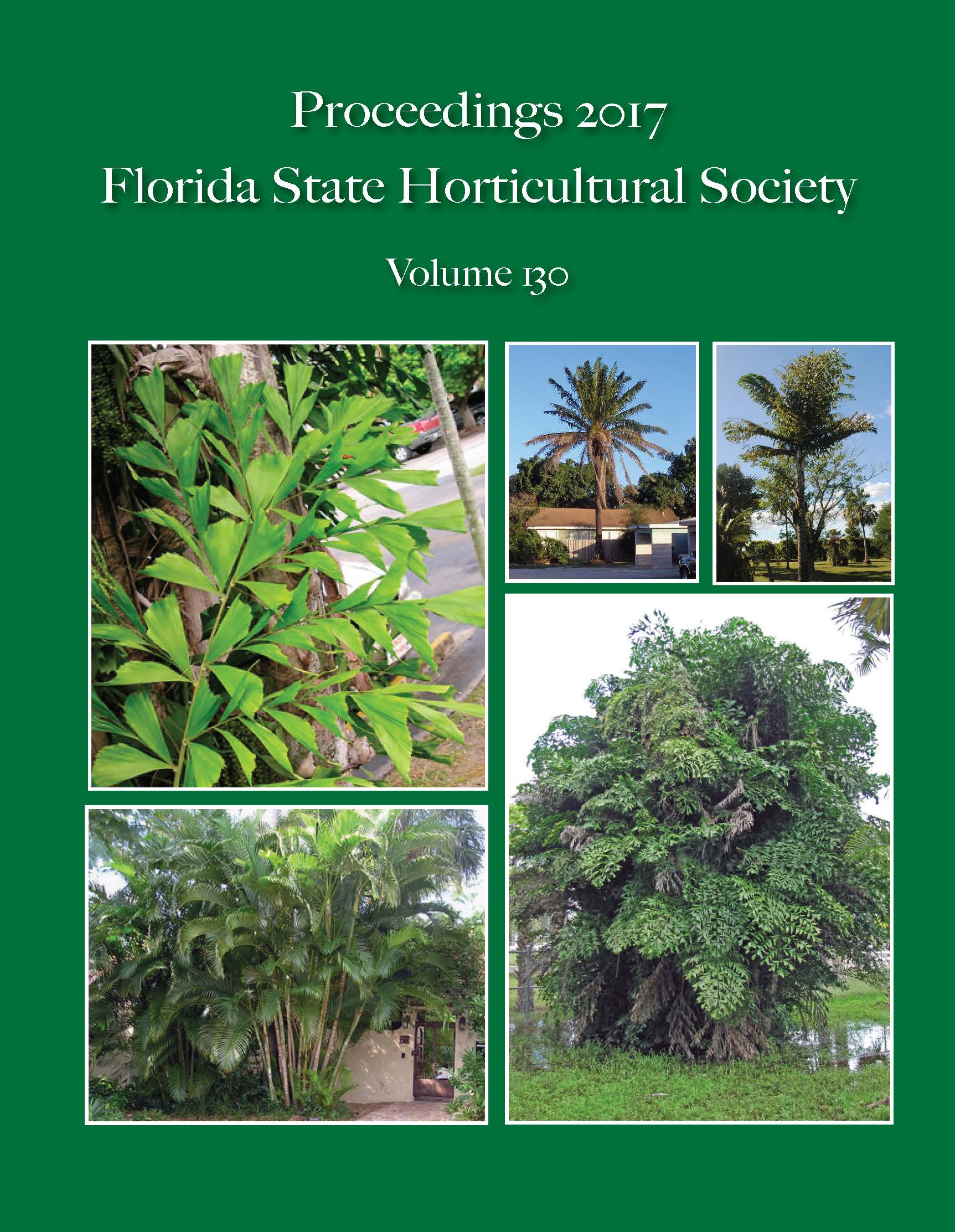Citrus Leaves Exposed to Citrus Canker Bacterium Produce Different Phenylpropanoids Based on Susceptibility, and Different from the Non-host Orange Jessamine
Abstract
Citrus canker (CC) caused by Xanthomonas citri subsp. citri (Xcc) impacts citrus production worldwide by reducing yield and blemishing fruit. The relative tolerance to CC among different citrus genotypes varies from highly susceptible lime and grapefruit to highly tolerant kumquat. A controlled greenhouse investigation was performed using a minimally destructive inoculation method on six Rutaceae family genotypes with varying tolerance to Xcc, from non-host to highly susceptible, including orange jessamine (Murraya paniculata), kumquat (Citrus japonica), calamondin (C. reticulate x C. japonica), sweet orange (C. sinensis), grapefruit (C. paradisi), and lime (C. aurantifolia). This investigation compared the responses of these six genotypes to infection with Xcc with respect to phenylpropanoid production. In response to Xcc infection all tested citrus genotype hosts, regardless of susceptibility, produced various phenylpropanoids, including umbelliferone, scoparone, herniarin, auraptene, and a polymethoxylated flavone. The character and degree of phenylpropanoid production varied between hosts. The similarly treated non-host orange jessamine did not exhibit altered phenylpropanoid production in response to Xcc.

